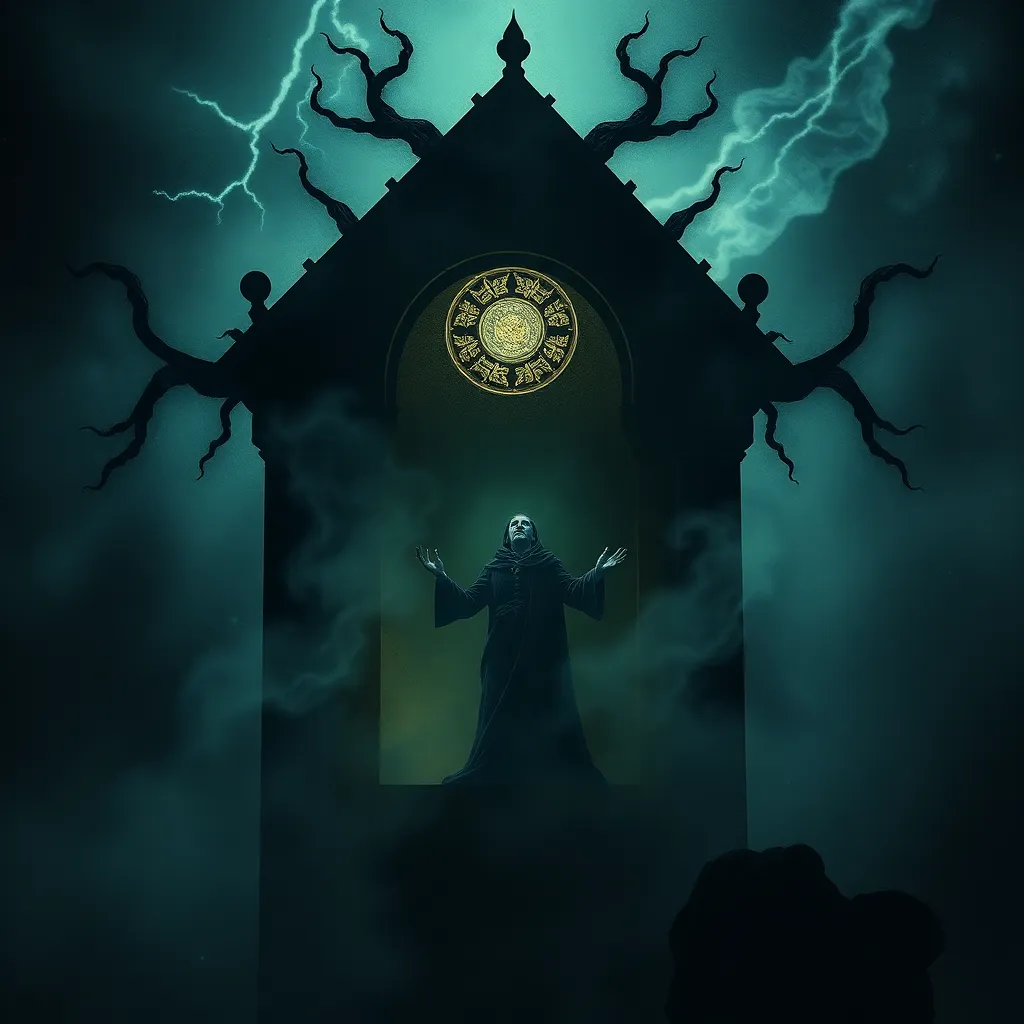The Unseen World: Exploring the Lore of the Japanese Oni
I. Introduction to Oni: The Mythical Beings of Japan
Oni are a prominent figure in Japanese folklore, often depicted as ogre-like demons that embody both terror and protection. Their origin can be traced back to ancient Japanese mythology, where they were seen as malevolent spirits. The word “oni” itself has roots in the ancient Japanese language, often associated with evil spirits or demons.
The cultural significance of Oni in Japanese folklore cannot be overstated. They serve as cautionary figures, representing the chaos and disorder that can arise from human behavior. As such, Oni have a dual role in Japanese culture: they are both feared and revered, making them an enduring symbol in the narrative of Japanese identity.
II. Historical Context of Oni in Japanese Culture
A. Evolution of Oni from Ancient to Modern Times
Historically, Oni have evolved from simple representations of natural disasters and societal fears to complex characters that appear in various forms of art and literature. Initially, they were associated with the dead and the afterlife, often depicted as vengeful spirits of those who were wronged.
B. Oni in Classical Literature and Art
Oni have been featured prominently in classical Japanese literature, including works like the “Tale of the Heike” and “The Tale of the Bamboo Cutter.” They are also illustrated in traditional woodblock prints (ukiyo-e) and paintings, where their fierce features and vibrant colors depict their fearsome nature.
III. Physical Characteristics and Depictions of Oni
A. Common Features: Horns, Fangs, and Skin Color
Oni are typically characterized by their distinctive physical traits, which include:
- Horns: Oni are often depicted with large, protruding horns, symbolizing their demonic nature.
- Fangs: Sharp fangs are a common feature, emphasizing their ferocity.
- Skin Color: Oni can have a variety of skin colors, commonly red or blue, which may symbolize different attributes or personalities.
B. Variations in Appearance Across Regional Folklore
The appearance of Oni can vary significantly across Japan. In some regions, they may be depicted as more human-like, while in others, they take on monstrous forms. This variation highlights the local interpretations of Oni and their significance within specific communities.
IV. The Role of Oni in Japanese Festivals and Celebrations
A. Setsubun: The Bean-Throwing Festival
One of the most well-known festivals featuring Oni is Setsubun, celebrated on February 3rd. During this festival, people throw roasted soybeans outside their homes or at family members while shouting, “Oni wa soto! Fuku wa uchi!” which translates to “Demons out! Luck in!” This ritual symbolizes the expulsion of evil spirits and the welcoming of good fortune.
B. Other Festivals Featuring Oni Imagery and Themes
Oni also appear in other festivals across Japan, such as:
- Oni Matsuri: Celebrated in various regions, this festival showcases parades featuring participants dressed as Oni.
- Hinamatsuri: While primarily a girls’ festival, Oni figures sometimes appear in decorations to ward off evil influences.
V. Oni as Symbols of Evil and Protection
A. Dual Nature: Villains vs. Guardians
Oni embody a dual nature in Japanese culture. On one hand, they are seen as malevolent beings that bring misfortune and chaos. On the other hand, they are also considered protectors, warding off evil spirits and bad luck. This complex characterization reflects the multifaceted nature of folklore and the human experience.
B. Oni in Traditional Japanese Beliefs and Superstitions
In traditional Japanese beliefs, Oni are often invoked in superstitions and rituals aimed at protection. For instance, Oni masks are hung in homes to ward off evil or are used during certain ceremonies to bring good luck.
VI. Oni in Modern Media and Popular Culture
A. Representation in Anime, Manga, and Video Games
In contemporary society, Oni have found a new life in modern media, including anime, manga, and video games. They are often portrayed with a mix of fearsome and humorous traits, appealing to a wide audience. Series like “Demon Slayer” and “Nioh” feature Oni as central figures, showcasing their strength and complexity.
B. Influence on Global Perceptions of Japanese Folklore
The portrayal of Oni in popular culture has influenced global perceptions of Japanese folklore. Characters based on Oni have become iconic, contributing to a greater understanding and appreciation of Japanese mythology beyond its borders.
VII. Comparative Analysis: Oni and Similar Mythical Creatures
A. Similarities to Other Mythological Beings (e.g., Demons, Ogres)
Oni share similarities with other mythical creatures from around the world, such as Western demons and ogres. All these beings often embody chaos and disorder, serving as cautionary figures in their respective cultures.
B. Unique Aspects of Oni in the Context of Global Folklore
However, Oni possess unique characteristics that set them apart. Their dual role as both protectors and malevolent beings, along with their specific cultural significance in Japan, provides a rich narrative that is distinct from other mythologies.
VIII. Conclusion: The Enduring Legacy of Oni in Contemporary Society
A. Reflection on Oni’s Impact on Japanese Identity
The legacy of Oni in Japan is profound, influencing not only folklore but also art, literature, and cultural identity. They serve as reminders of the balance between good and evil, chaos and order.
B. The Future of Oni in Cultural Narratives and Global Awareness
As Japan continues to engage with its folklore in modern contexts, Oni will likely remain a vibrant aspect of cultural narratives. With the globalization of media, the fascination with Oni is set to grow, fostering a deeper understanding of Japanese culture worldwide.


